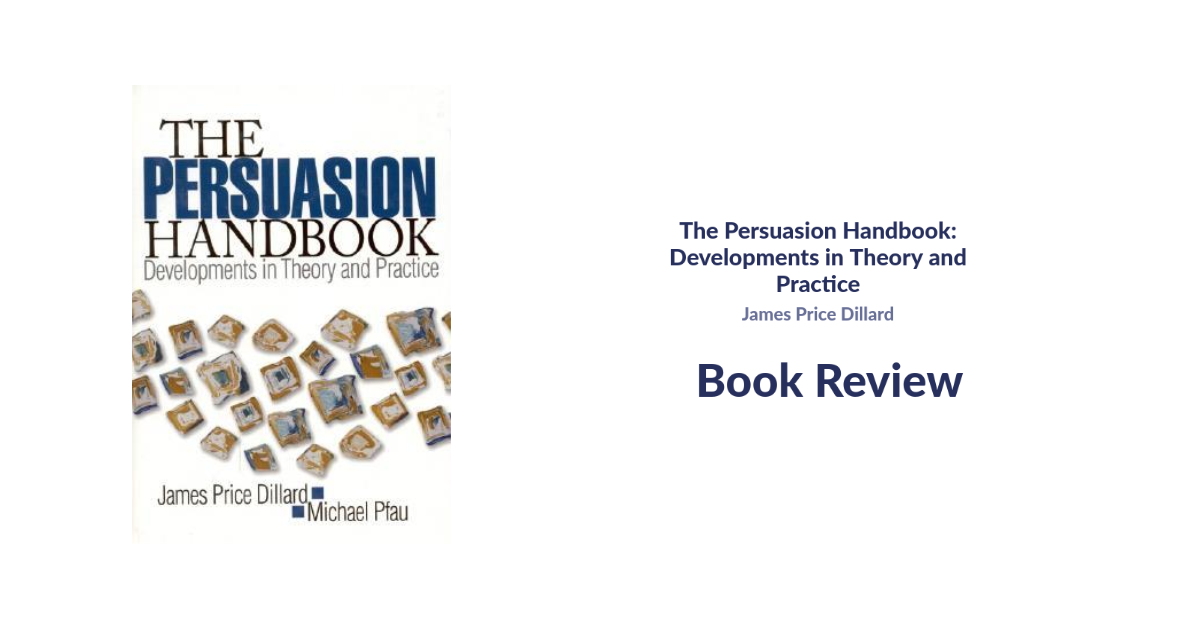Book Review: “The Persuasion Handbook: Developments in Theory and Practice”

“The Persuasion Handbook: Developments in Theory and Practice” is a comprehensive and in-depth guide to the field of persuasion, edited by James Price Dillard and Michael Pfau, both respected scholars in the field. The book brings together a diverse group of experts to explore various aspects of persuasion and provides a broad overview of the latest research and thinking in the field.
Overview
“The Persuasion Handbook” is divided into four parts, each focusing on a different aspect of persuasion. The first part deals with the foundations of persuasion, including the history of the field, the different approaches to persuasion, and the ethical considerations involved. The second part focuses on the cognitive and emotional processes that underlie persuasion, including how people process information, how they form attitudes and beliefs, and how they are influenced by emotions.
The third part of the book explores the role of context in persuasion, including how different situational factors and cultural influences can shape the persuasive process. The final part of the book looks at the applications of persuasion in various settings, including advertising, politics, health communication, and interpersonal relationships.
Key Takeaways
One of the key takeaways from the book is the complexity of the persuasion process and the many factors that can influence it. The book highlights the importance of taking a multidimensional approach to persuasion, considering both the cognitive and emotional processes that underlie it as well as the contextual factors that shape it.
Another key takeaway is the need to be mindful of the ethical considerations involved in persuasion. The book emphasizes the importance of respecting the autonomy and dignity of the people being persuaded and avoiding manipulative or deceptive tactics.
Quotes
Here are a few quotes from the book that highlight some of the key ideas:
- “Persuasion is a complex process that involves many factors, including the characteristics of the persuader and the persuadee, the message and the medium, the context in which the communication occurs, and the goals of the persuasion.”
- “Persuasion involves the transmission of information, but it is not simply a matter of imparting knowledge. It is also a matter of changing attitudes and behaviors.”
- “The ethical issues involved in persuasion are complex and multifaceted, involving considerations of autonomy, dignity, and trust.”
- “The cognitive and emotional processes involved in persuasion are closely interrelated and often operate in tandem.”
- “Context plays a central role in shaping the persuasive process and can have a profound influence on how messages are perceived and interpreted.”
Conclusion
Overall, “The Persuasion Handbook” is an invaluable resource for anyone interested in the field of persuasion. It provides a broad and in-depth overview of the latest research and thinking on persuasion and is an essential reference for scholars and practitioners alike. The book is well-written and accessible, making it a valuable resource for anyone looking to deepen their understanding of persuasion and its many applications.




